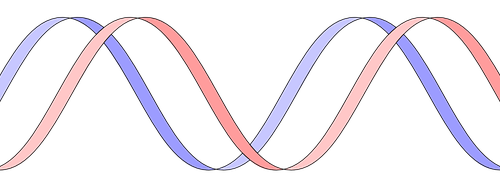Previously we published an article about CNIPA rejecting a patent application claiming a food that could also be used to treat or prevent diseases based on the food’s alleged non-compliance with Food Safety Law. China’s Food Safety Law includes a provision which states any use of a composition as a food must be strictly separated from any medicinal use. Recently, we have noticed a worrying trend of such “food safety” type rejections impacting a broader class of inventions, even for inventions that are not directed towards the food itself.
Here is one such case.
Manufacturing Methods for Making a Plate
The patent application[1] at issue is directed towards a method of making a paper holder. The specification provides several examples of such “paper holders”, such as a paper tray, a paper coaster, a paper dinner plate, and a paper fruit tray.
Claim 1 reads:
1. A method of manufacturing a paper object holder, comprising the following steps:
(1) using melamine glue and paper as raw materials, dip-coating the paper with melamine glue to attach a layer of melamine glue to the paper, drying at a high temperature in a drying equipment to obtain a rigid paper;
(2) cutting step (omitted here);
(3) molding step (omitted here).
Melamine glue, which is prepared with formaldehyde, urea, melamine, and polyvinyl alcohol, is used to improve the performance of the paper, such as enhancing the strength of the paper as an additive, serving as an adhesive between multiple sheets, and serving as a coating on the surface of the paper holder after molding.
Filing Background
The application was first rejected for lack of inventiveness during prosecution. During the re-examination process, the Re-examination Board raised additional rejections on the ground of Art 5.
Article 5 states that no patent right should be granted for any application that violates the laws of the State, goes against social morals or is detrimental to the public interest.
The Board explained that the melamine glue in claim 1 violated the requirements of at least two food safety standards[2].
Article 2 of the Food Safety Law[3] applies not only to foods but also to food containers. Article 41 clearly indicates that national standards should be implemented for food-related products that directly contact food.
It was summarized that this claimed production method did not meet the National Food Safety Standards for producing food-related products, and thus was unpatentable subject matter under Article 5 of the Patent Law.
What’s a bit unusual about this case is that this “Food Safety Law” issue was not raised during normal examination. It did not appear until re-examination. Some senior examiners have commented that this problem should have been pointed out first during examination[4] (instead of raising novelty and inventive step).
EIP thoughts
Can the Re-Examination Board raise new rejection(s) during re-examination?
Normally, the board only reviews the pending rejection(s) and the reasons thereof. However, the board does have the authorization to introduce new issues and further reject applications based on new grounds.[5]
What should we do with food related inventions?
Food-related patent applications are now becoming more sensitive. Examiners are required to deal with such applications sensitively and properly to avoid crossing the “red line” of the examination, i.e., granting a patent with potential food safety risks. CNIPA is even drafting a set of guidelines in this area (Guiding Opinions on the Application of Art 5.1 of the Patent Law in the Food Field (Trial) “Opinions”, thereafter), which is not yet available on-line.
Anyone wanting to file for patent protection on inventions that have anything to do with food should be prepared to deal with such issues. Here are some suggestions when handling food related patent applications:
- Check the Food Safety Law and related standards before drafting, including the white-list and black-lists provided on the Food Safety Net[6];
- Separate food-related inventions from non-food-related applications; and
- Further to point 2, if you are unable to separate the inventions, include at least some non-food related examples and embodiments in the specification as a backup plan.
We are requesting access to the Opinion, and will write a follow-up article if there is anything interesting.
This article is for general informational purposes only and should not be considered legal advice or a legal opinion on a specific set of facts.
CN201810521996.9 ↑
National Food Safety Standard – Standard for the Use of Additives for Food Contact Materials and Products, and National Food Safety Standard – Coatings for Food Contact Materials ↑
http://www.npc.gov.cn/zgrdw/englishnpc/Law/2011-02/15/content_1620635.htm ↑
See Patent Examination Guideline, Part Four, Chapter 2, Section 4.1 ↑
Food Safety Net, http://www.nhc.gov.cn/sps/new_index.shtml, is an official government website with official information of food safety standards and monitoring. ↑
About the Authors

Yolanda Wang is a Principal, Chinese Patent Attorney, and Chinese Patent Litigator at Eagle IP, a Boutique Patent Firm with offices in Hong Kong, Shenzhen, and Macau.

Jennifer Che, J.D. is Vice President, Principal, and a US Patent Attorney at Eagle IP, a Boutique Patent Firm with offices in Hong Kong, Shenzhen, and Macau.





